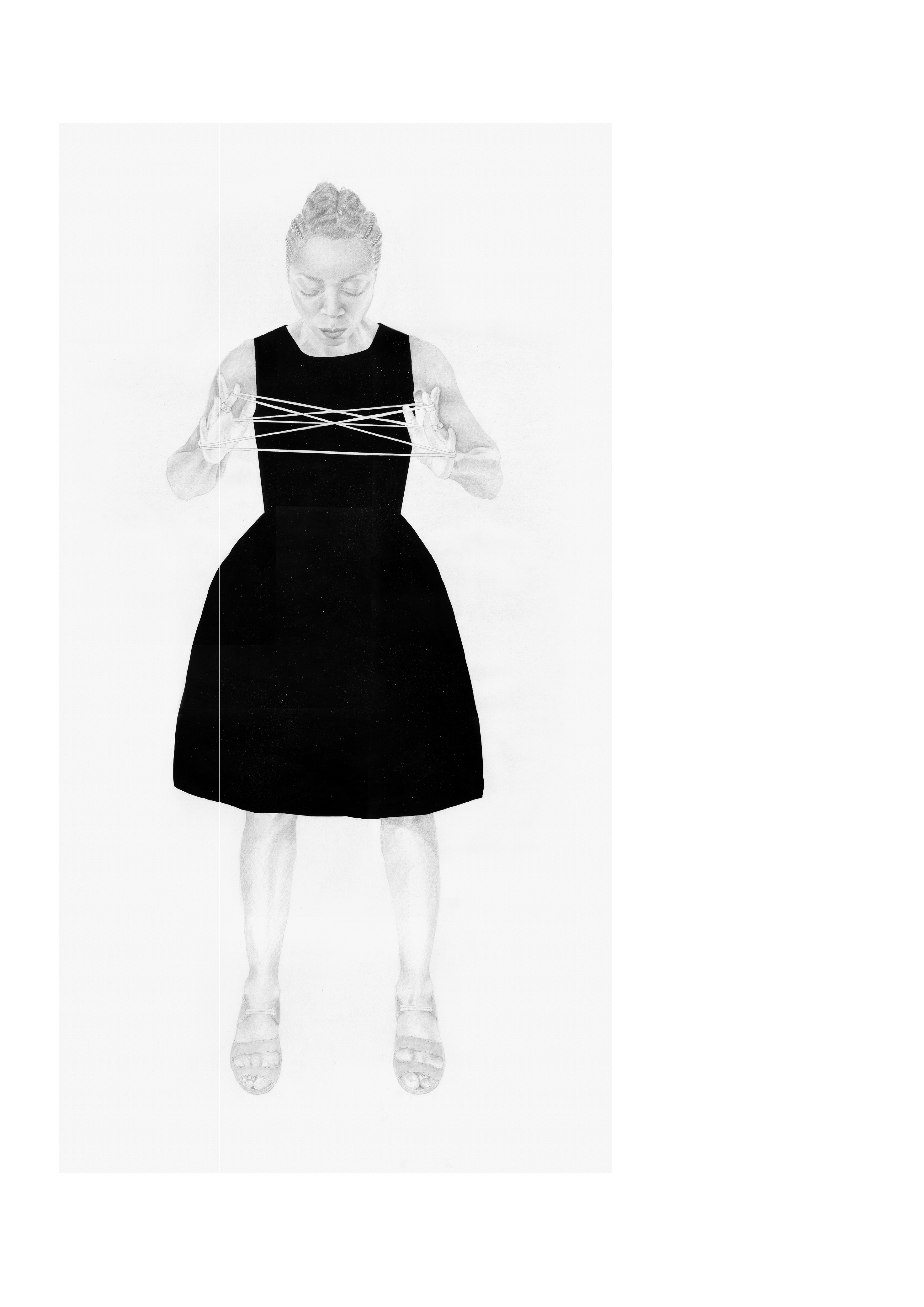Charmaine Watkiss’s primary medium is drawing. As a person of the Caribbean diaspora, Watkiss is inspired by her Jamaican heritage. Exploring African traditions and cosmology is integral to her practice. It may appear that Watkiss herself is the focus of her life-sized works, but her drawings are not self-portraits; rather, they are characters that navigate and reimagine ideas of ancestry, tradition, ritual and cosmology.
Watkiss is known for using one colour other than graphite pencil in her work, indigo. Historically, the value of indigo increased as it became commodified in West Africa. It was transported to the Americas during the transatlantic slave trade and produced on plantations throughout the Caribbean until the end of the 18th century. In West Africa, indigo dyeing dates back to the 11th century and among the Yoruba women of Nigeria a distinct technique developed called Adire (Hand tie and indigo dye) that has become a symbol of cultural heritage and women’s entrepreneurship.
Watkiss engages with indigo’s sacred use in ancient African cultures, particularly with reference to funerary rites and spiritual beliefs. This connection is established vividly and poetically in Knowledge Keeper, with intricate geometric motifs in various shades of blue. Stars within the clothing and the string in the hands create the infinity symbol, exploring the retrieval of ancient knowledge outside of the boundary of time. Similarly in We are Here (2015), the dress also features cosmic stars and within the hands is a star created through the game Cat’s Cradle.
For Bradford Museums and Galleries, acquiring these drawings by Charmaine Watkiss will add to the growing number of works documenting a myriad of Black British female experiences. The curators also intend for Watkiss’s works to inspire their audiences and ignite a potential passion for an artistic career path. When on display, the works will facilitate discussions with the diverse communities within the district, in particular the Caribbean community.


